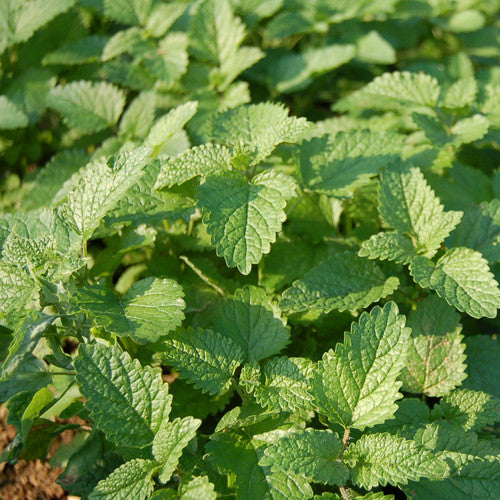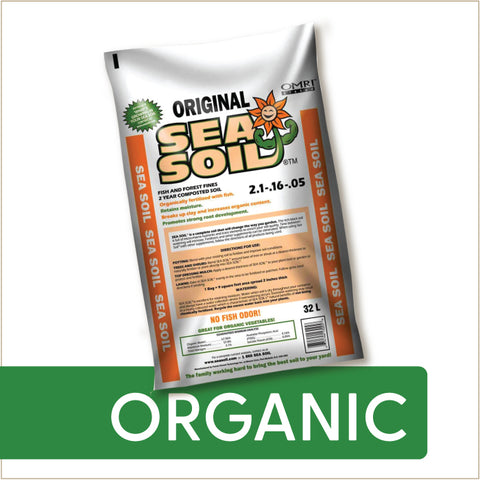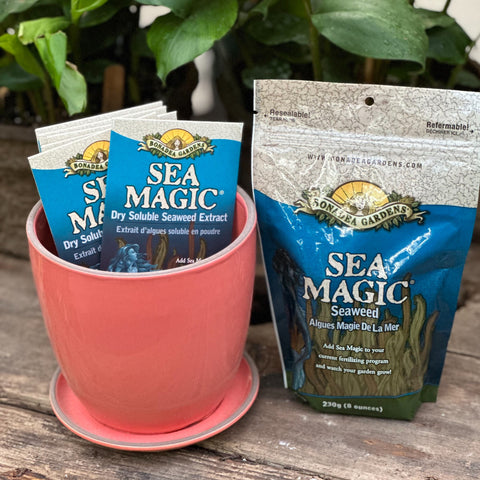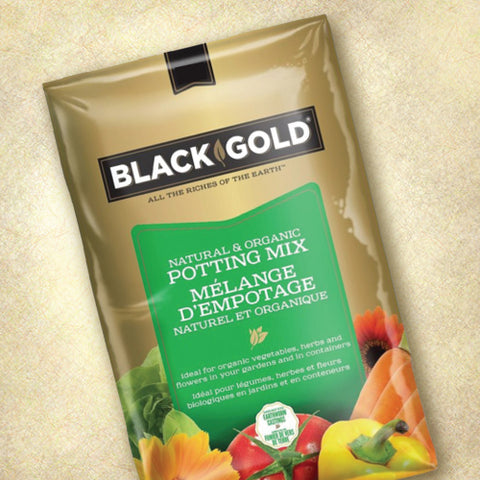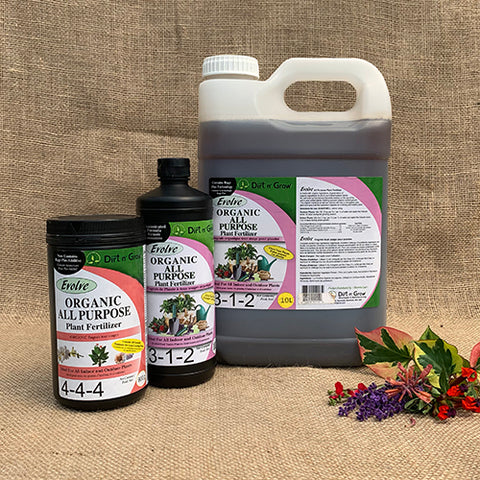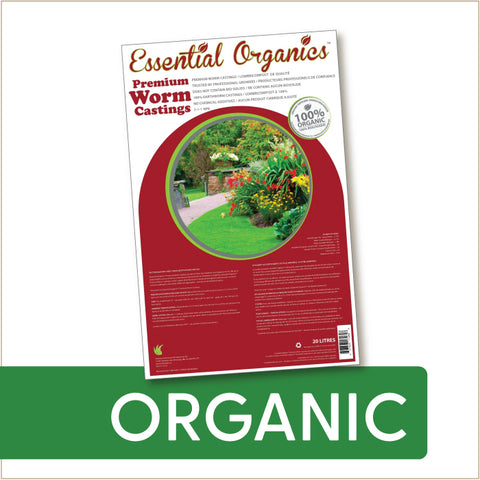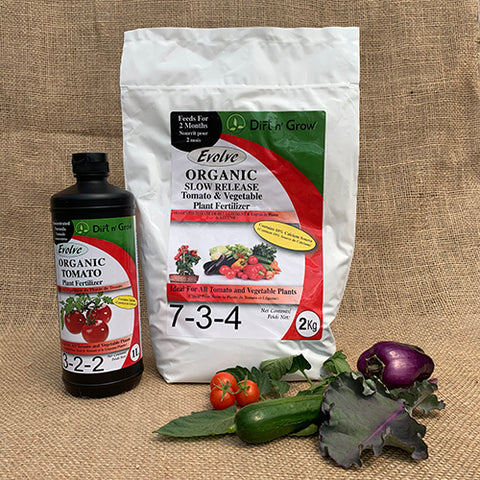Lemon Balm (Certified Organic Seeds)
$4.79
This item may be out of season or currently out of stock. Please check back.
Description: Classic tea and bee herb for the garden or 6-10" pots. Deliciously lemon-scented foliage can be harvested for fresh use all summer. Makes great iced tea! Also tasty as a seasoning for fish, chicken, soups... or anywhere a bold lemon flavour is desired! An easy idea is to warm honey with fresh Lemon Balm leaves and use as a glaze.
USDA Certified Organic/ Heirloom/ Open Pollinated/ Non-GMO
Pack Size: 0.89 g (1/32 oz)
Latin Name: Melissa officinalis
Alternative Names: Melissa
Main Uses: Culinary, Tea, Fragrant
Zone Hardiness: Zone 3-4
Exposure: Full sun to part shade
Height: 30 cm (12 inches)
Flower Color: White (insignificant)
Flowering Time: Mid-summer
Certified Organic: USDA Certified Organic
Alternative Names: Melissa
Main Uses: Culinary, Tea, Fragrant
Zone Hardiness: Zone 3-4
Exposure: Full sun to part shade
Height: 30 cm (12 inches)
Flower Color: White (insignificant)
Flowering Time: Mid-summer
Certified Organic: USDA Certified Organic
Germination: 7 - 14 days.
Pre-treatment: Store seeds in the fridge until ready to plant.
Sowing: Indoors: 4 - 6 weeks before last frost date. Sow 5 seeds per cell or plug. For best results, apply Sea Magic™ kelp from first watering. Apply a seedling-starter fertilizer such as Evolve Seedling once the second set of true leaves has appeared, and then alternate between the kelp and seedling starter until transplant.
Planting Depth: Lightly cover.
Planting Out: Plant in well-drained fertile soil (garden or container) once seedlings are established and risk of frost has passed.
Outdoors: Direct seed outdoors in late May, once the soil can be worked.
Pre-treatment: Store seeds in the fridge until ready to plant.
Sowing: Indoors: 4 - 6 weeks before last frost date. Sow 5 seeds per cell or plug. For best results, apply Sea Magic™ kelp from first watering. Apply a seedling-starter fertilizer such as Evolve Seedling once the second set of true leaves has appeared, and then alternate between the kelp and seedling starter until transplant.
Planting Depth: Lightly cover.
Planting Out: Plant in well-drained fertile soil (garden or container) once seedlings are established and risk of frost has passed.
Outdoors: Direct seed outdoors in late May, once the soil can be worked.
Growing in Containers: Well-suited to a medium-sized pot (8-12 inches).
Fertilizing (Containers): Add up to 25% quality compost to your potting mix. This plant loves a higher-nitrogen fertilizer - diluted fish fertilizer is an excellent organic choice, applied weekly.
Watering (Containers): Water deeply when the top inch of the soil feels dry to the touch. During hot weather, check pots daily. The addition of up to 20% CocoEarth is an excellent organic method for managing water in pots; it holds several times its weight in water. This helps manage both over and under-watering!
Growing in Mixed Planters: Well-suited for larger mixed planters.
Fertilizing (Garden): Plant in a garden bed recently amended with quality compost. No additional fertilizing is required.
Watering (Garden): Water daily for the first two weeks post transplanting. Plants usually hold their own once well established, but benefit from deep waterings in late summer and fall as plants go into dormancy.
Harvesting: Harvest leaves frequently, using sharp scissors.
Beneficials Attracted to this Plant: Bees love lemon balm, and act as great pollinators for garden fruits and vegetables!
Fertilizing (Containers): Add up to 25% quality compost to your potting mix. This plant loves a higher-nitrogen fertilizer - diluted fish fertilizer is an excellent organic choice, applied weekly.
Watering (Containers): Water deeply when the top inch of the soil feels dry to the touch. During hot weather, check pots daily. The addition of up to 20% CocoEarth is an excellent organic method for managing water in pots; it holds several times its weight in water. This helps manage both over and under-watering!
Growing in Mixed Planters: Well-suited for larger mixed planters.
Fertilizing (Garden): Plant in a garden bed recently amended with quality compost. No additional fertilizing is required.
Watering (Garden): Water daily for the first two weeks post transplanting. Plants usually hold their own once well established, but benefit from deep waterings in late summer and fall as plants go into dormancy.
Harvesting: Harvest leaves frequently, using sharp scissors.
Beneficials Attracted to this Plant: Bees love lemon balm, and act as great pollinators for garden fruits and vegetables!
Suitability for Indoors: Not ideal for indoors - must be trimmed regularly to keep plants vigorous.
Exposure: Full sun or grow lights.
What about Grow Lights? Simple fluorescent grow lights allow for year-round growth and productivity that would otherwise be impossible in our northern climate. We recommend the ultra-efficient and compact T5 units, which are inexpensive and easy to install. Leave lights on 16-18 hours per day to simulate summer daylight conditions.
Indoor Container Suggestions: Minimum 6" pot with excellent drainage. Avoid strawberry pots (those with multiple pockets) or other types of mixed planters.
Winter Fertilizing: Repot or refresh soil in fall, when bringing pots indoors. Add up to 25% quality compost. During the lower-light months (October-January), fertilize monthly with a balanced organic plant food. As light levels go up, and new growth emerges, increase fertilizing to bi-weekly. If growing under lights, fertilize bi-weekly right through winter. Soluble (non-organic) fertilizers are not recommended, as these can cause burning or difficult-to-manage changes in the soil.
Winter Watering: Water deeply when top inch of the soil feels dry to the touch. Check soil moisture two to three times per week.
Exposure: Full sun or grow lights.
What about Grow Lights? Simple fluorescent grow lights allow for year-round growth and productivity that would otherwise be impossible in our northern climate. We recommend the ultra-efficient and compact T5 units, which are inexpensive and easy to install. Leave lights on 16-18 hours per day to simulate summer daylight conditions.
Indoor Container Suggestions: Minimum 6" pot with excellent drainage. Avoid strawberry pots (those with multiple pockets) or other types of mixed planters.
Winter Fertilizing: Repot or refresh soil in fall, when bringing pots indoors. Add up to 25% quality compost. During the lower-light months (October-January), fertilize monthly with a balanced organic plant food. As light levels go up, and new growth emerges, increase fertilizing to bi-weekly. If growing under lights, fertilize bi-weekly right through winter. Soluble (non-organic) fertilizers are not recommended, as these can cause burning or difficult-to-manage changes in the soil.
Winter Watering: Water deeply when top inch of the soil feels dry to the touch. Check soil moisture two to three times per week.

